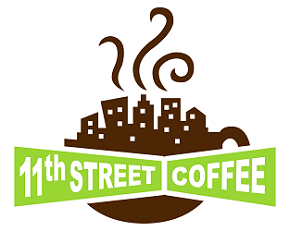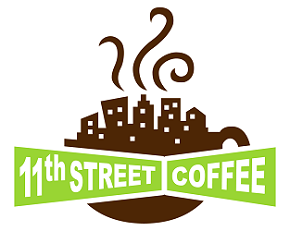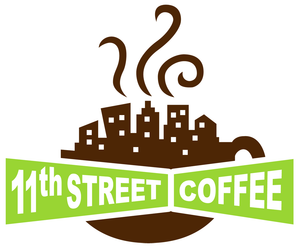History of K-Cups: How Single-Serve Coffee Changed the Game
If you’re a coffee lover, chances are you have a Keurig or another single-serve coffee maker in your kitchen. These handy appliances, and the patented K-cups that you use with them, transform the way millions of people around the world brew and enjoy their daily cups of java. But it hasn’t always been this way, and the drastic shift in the coffee industry only happened recently. Today, let’s take a journey through the history of the K-Cup, detailing how single-serve coffee changed the game for the food and beverage industry across the globe, and what we can expect from these innovations in the future.
The Early Days of Single-Serve Coffee
Before single-serve coffee makers graced our countertops, the old-school drip coffee maker was the norm. Back when people went to diners for their first cup of joe before work, pot coffee was the most effective way to cater to several guests at once. In fact, brewing larger batches of coffee is still a great option for those in a larger household with many coffee drinkers. Still, brewing an entire pot was inconvenient for folks who just wanted a single cup, and many simply wanted to get what they needed and move on with their day. Coffee enthusiasts were yearning for a more efficient way to brew their favorite pick-me-up.
Thankfully, a man named John Sylvan recognized this need. Sylvan started experimenting with coffee grounds, paper filters, and plastic cups in the early 1990s. His goal was to make a portable, single-serve coffee container that could preserve the brew’s rich flavors while reducing waste and simplifying the brewing process. These pods would only have the number of grounds necessary for one cup of coffee, and there would be no tedious measuring or cleanup when you use them. This invention would be the beginning of an era in the coffee world.
The Invention of the Keurig Coffee Maker
Sylvan eventually teamed up with his former roommate Peter Dragone, and together the duo formed Keurig Inc. in 1992. They devoted their time to perfecting the single-serve coffee brewing system, inspired by Sylvan’s previous experiments.
Building upon their concept, the pair created a coffee maker that punctured a hole in the small, pre-packaged plastic cup (later known as the K-Cup), heating and forcing water through it and delivering a perfectly brewed cup of coffee in under a minute. This streamlined process eliminated both the need for coffee filters and the frustration of brewing a whole pot for just a single cup.
After years of development and negotiation, the first Keurig coffee maker debuted in 1998. They designed the early models specifically for office use, hoping to generate excitement about brewing a fresh cup of coffee without wasting any. The trend quickly caught fire, and Keurig soon expanded into the home-brewing market. The brand followed suit by designing a line of additional Keurig machines that were more compact for the average home kitchen, with more advanced features for customizable brewing.
K-Cups and Their Impact on the Coffee Industry
Once the Keurig coffee maker and K-Cups hit the market, coffee enthusiasts went wild. The single-serve system made brewing a cup of coffee more convenient than ever—no need for measuring, no mess, and consistently great flavor. Various coffee brands, including Green Mountain Coffee, Starbucks, and Dunkin’ Donuts, jumped on the bandwagon, creating their own K-Cup flavors.
Apart from convenience, K-Cups allowed coffee drinkers to experiment with a wide variety of flavors, indulging in different roasts or flavored blends without forcing them to commit to an entire bag of coffee beans. This convenience led to an entirely new sub-industry focusing on unique blends and novel concoctions to satisfy our collective coffee cravings.
But with many good things come some drawbacks. The widespread popularity of K-Cups raised concerns about their environmental impact. The non-recyclable, disposable nature of these plastic cups contributes to a lot of waste. Keurig Green Mountain, recognizing the criticism, makes efforts to minimize the ecological impact by developing recyclable K-Cups and instituting recycling programs. You can reuse your used K-cups in many ways and even reduce your consumption entirely with the right combination of techniques. These efforts prove that, despite the setback, these inventions are here to stay.
What To Expect in the Future
The coffee industry is evolving, and the single-serve coffee segment is no exception. So, no guide to the history of the K-cup and the innovation of single-serve coffee would be complete without talking about what’s to come. The desire for convenience and variety will likely continue driving innovation in the realm of single-serve coffee. Here’s some of what we can expect moving forward.
Sustainable Solutions
As environmental concerns continue to grow, we can expect more sustainable solutions to emerge. These concerns could include further advancements in recyclable or compostable K-Cups or even innovations in reusable K-Cup alternatives that allow consumers to use their coffee grounds without producing plastic waste.
Smart Technology Integration
With the rise of smart homes and appliances, it’s likely that future Keurig machines and K-Cups will integrate with technology to offer an even more convenient and personalized experience. Imagine a K-Cup coffee maker that reorders your preferred K-Cups when you’re running low.
Greater Variety and Customization
The demand for variety is unlikely to wane, so anticipate seeing an even wider range of flavors, blends, and brands available in K-Cup form. Additionally, we may see more customization options, such as K-Cup coffee makers that let you use more than one K-Cup at a time.
Health-Inspired Innovations
As health and wellness trends continue to influence consumer choices, we might see the development of K-Cups infused with vitamins, antioxidants, or other beneficial ingredients. Coffee itself is inherently healthy, but there are always ways to make it more so for those who want that extra boost in the morning.
Collaborations With Specialty Coffee Brands
Keurig already sells coffee blends from a wide range of unique manufacturers. However, Keurig might partner with more high-end coffee brands to create gourmet K-Cups to cater to the growing population of specialty coffee enthusiasts.
The invention of the K-Cup has undoubtedly changed the game in the world of coffee. Brewing is now a more convenient and mess-free process while offering consumers a plethora of choices. Despite the concerns and challenges, one thing is certain: the K-Cup has secured its place in the history of coffee. That’s why we at 11th Street Coffee commit ourselves to be a supplier of all the coffee blends you could ever want and need, including flavorful medium-roast coffee pods.
We understand how many options there are, and we set out to make sure that you can find everything you want in one place. Shop with us today for affordable K-cups for the entire week.




